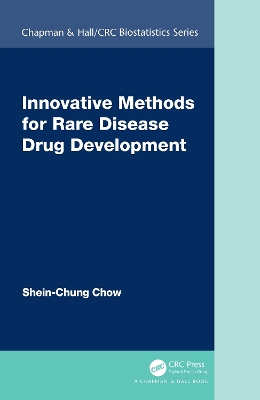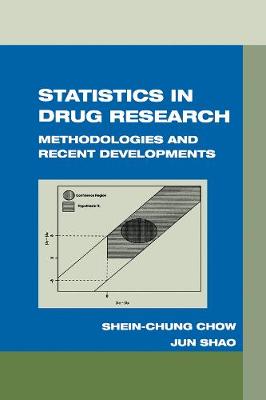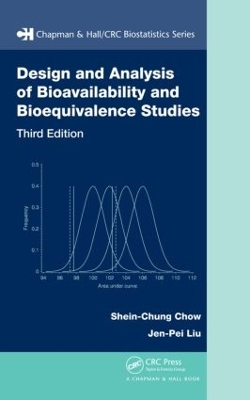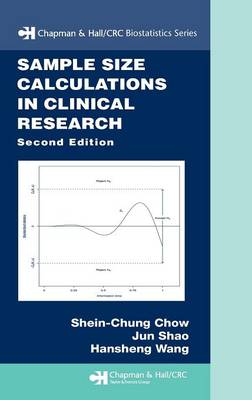Chapman & Hall/CRC Biostatistics
6 total works
In the United States, a rare disease is defined by the Orphan Drug Act as a disorder or condition that affects fewer than 200,000 persons. For the approval of "orphan" drug products for rare diseases, the traditional approach of power analysis for sample size calculation is not feasible because there are only limited number of subjects available for clinical trials. In this case, innovative approaches are needed for providing substantial evidence meeting the same standards for statistical assurance as drugs used to treat common conditions. Innovative Methods for Rare Disease Drug Development focuses on biostatistical applications in terms of design and analysis in pharmaceutical research and development from both regulatory and scientific (statistical) perspectives.
Key Features:
- Reviews critical issues (e.g., endpoint/margin selection, sample size requirements, and complex innovative design).
- Provides better understanding of statistical concepts and methods which may be used in regulatory review and approval.
- Clarifies controversial statistical issues in regulatory review and approval accurately and reliably.
- Makes recommendations to evaluate rare diseases regulatory submissions.
- Proposes innovative study designs and statistical methods for rare diseases drug development, including n-of-1 trial design, adaptive trial design, and master protocols like platform trials.
- Provides insight regarding current regulatory guidance on rare diseases drug development like gene therapy.
Sample Size Calculations in Clinical Research
by Shein-Chung Chow, Hansheng Wang, and Jun Shao
Design and Analysis of Bioavailability and Bioequivalence Studies
by Shein-Chung Chow and Jen-pei Liu
Preeminent Experts Update a Well-Respected Book
Taking into account the regulatory and scientific developments that have occurred since the second edition, Design and Analysis of Bioavailability and Bioequivalence Studies, Third Edition provides a complete presentation of the latest progress of activities and results in bioavailability and bioequivalence on regulatory requirements, scientific and practical issues, and statistical methodology.
New to the Third Edition
- Four new chapters that present a thorough account of novel developments in the field
- New and updated sections that reflect recent advances in the statistical methodology in the design and analysis of bioavailability and bioequivalence studies
- Reorganization of the material into five parts, making it easier to access related information together
- Over 100 new references from the literature
Like its bestselling predecessors, this edition covers all of the statistical problems that may occur in the various stages of design and data analysis. Keeping the mathematics and statistics at a fundamental level, it continues to focus on practical concepts rather than technical details.
The US Food and Drug Administration's Report to the Nation in 2004 and 2005 indicated that one of the top reasons for drug recall was that stability data did not support existing expiration dates. Pharmaceutical companies conduct stability studies to characterize the degradation of drug products and to estimate drug shelf life. Illustrating how stability studies play an important role in drug safety and quality assurance, Statistical Design and Analysis of Stability Studies presents the principles and methodologies in the design and analysis of stability studies.
After introducing the basic concepts of stability testing, the book focuses on short-term stability studies and reviews several methods for estimating drug expiration dating periods. It then compares some commonly employed study designs and discusses both fixed and random batch statistical analyses. Following a chapter on the statistical methods for stability analysis under a linear mixed effects model, the book examines stability analyses with discrete responses, multiple components, and frozen drug products. In addition, the author provides statistical methods for dissolution testing and explores current issues and recent developments in stability studies.
To ensure the safety of consumers, professionals in the field must carry out stability studies to determine the reliability of drug products during their expiration period. This book provides the material necessary for you to perform stability designs and analyses in pharmaceutical research and development.
Sample Size Calculations in Clinical Research, Second Edition
by Shein-Chung Chow, Jun Shao, and Hansheng Wang
A comprehensive and unified presentation of statistical concepts and practical applications, this book highlights the interactions between clinicians and biostatisticians, includes a well-balanced summary of current and emerging clinical issues, and explores recently developed statistical methodologies for sample size calculation. Whenever possible, each chapter provides a brief history or background, regulatory requirements, statistical designs and methods for data analysis, real-world examples, future research developments, and related references.
One of the few books to systematically summarize clinical research procedures, this edition contains new chapters that focus on three key areas of this field. Incorporating the material of this book in your work will help ensure the validity and, ultimately, the success of your clinical studies.





